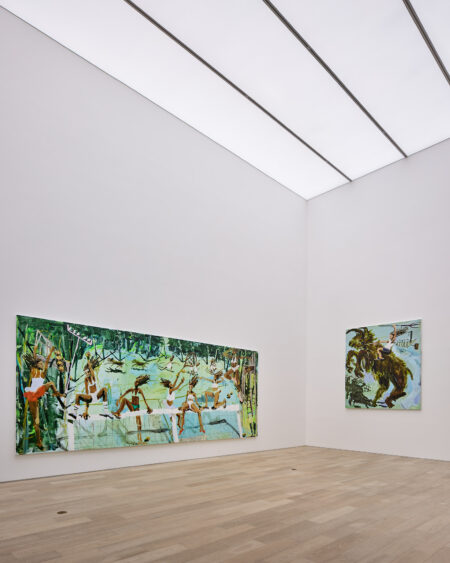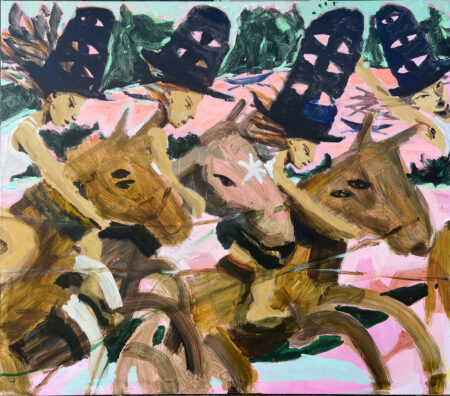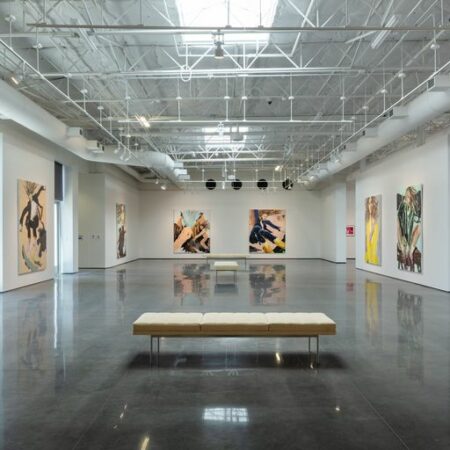TINA DICARLO
Is a writer and curator living in Berlin and London. From 2000 to 2007 she was a curator at MOMA Museum of Modern Art, New York and is currently a guest professor at the Berlage Institute, The Netherlands. She holds advanced degrees in mathematics, philosophy, and art history from the Courtauld Institute, London and a Master’s of Architecture from Harvard University, Graduate School of Design.
ALLEGORIES OF RUINS AND THE INEVITABLE UTOPIAS OF ABANDONMENT
Does my presence here change things? I realise you were not expecting to find me, nor anyone else, for that matter. And you felt a certain freedom, a certain latitude, as if you were not trespassing, for this structure it seems, belongs to no one and to everyone. The door is slightly ajar. The structure is crumbling, the wood rotting, slats missing, so you could see inside. Light seeps through these slits, through the door, as if beckoning you, urging you to peak around the corner. Perhaps. So I will leave you to enter as you might have done, on your own, seemingly at the end, or at one moment of ruination, which ironically is your beginning. But first please indulge me and allow me to ask you before you enter:
Why did you come here? And what did you expect to find? Certainly I cannot believe any sort of common claim that you were merely passing by. This place has long since been abandoned. Left. All signs have been removed, traces effaced, and it remains – like the secret hidden within the flying carpet – that which one passes by unknowingly. Tell me: Do you think these ruins proclaim this building was beautiful? Or do you find that time and life debase? That life wears? That with abandonment comes age, deterioration and weariness, as if the de- cay of the body?iv Do you find here a silence of emptiness? Or do you agree that pleasure is silent, just like the state of happiness? Is there necessity in amusement as there is in science?
Do these paintings, these found sounds, these stilled frames within which the only presence becomes a passing of fading light, pos- sess, like the built structure, a clarity of emptiness?vi Can cruelty and compassion find a place here or is it, as an abandoned life lead in solitude, where they seemingly have none? Are youth and strength criteria for beauty?
We inhabit the skeletal roller coasters, desiccated waterslides, stilled Ferris wheels, slowed train tracks, and baby flyers poised for flight in Mie Olise’s THE EXQUISITE CAPABILITIES OF THE FLYING CARPET as we might inhabit the days of abandonment. Here are the places from whom one, or many, have removed their thoughts, their desires, and transferred them elsewhere. Objects turn to stone. Veins contract. Skin freezes. One becomes cold herevii. Neglect, faded col- ours, faded glory, manifest themselves as if unkempt, unwashed hair, an unwashed body. Movement has ceased. Presence, left behind, is happened upon. Rendered, built, it is constructed as much through the layering of thick planes of creamy browns, blacks, grays, pinks and reds, as through the assembly of worn slats of wood, as through series of temporal frames. In these practical signs of abandonment there is no rancor, no rage, only the precarious-state-of-things, found in-the-midst.
Set with oblique, often vertiginous viewpoints, against a luminous, infinite graying light, these scenes invite the spectator in, as if a novel, in which the narrator and audience act as characters, and the form of the text is an invitation to the readerviii. Foreshortened spaces expand and contract, objects shift from foreground to background as we move around the room. We see these structures from above or below, set against an aging sky tinged with pink, juxtaposed against diamond-shaped patterns of the nineteenth-century Harlequin. They extend beyond the painted frame of the canvas, beyond the walls of the gallery. Floating, hanging above any apparent foundation, they leave us unmoored, ungrounded, out-of-place.
If, as Walter Benjamin wrote in 1928, “allegories are in the realm of thoughts, what ruins are in the realm of things,” then where are we exactly within the work of Olise? Do such spaces inhabit an interior world, much like the exterior built world in which it is seen?ix If one speaks of the architecture of the novel as its plots and characters, among whom the audience is one, can one similarly speak of an architecture of abandonment, in which suspended airplanes, frozen waterways, skeletal tracks, faded magic carpets belie emptiness with presence, elude absence through construction?
While such fantastic spaces may allude to Olise’s training as an architect, the sensual tactility, physicality, presentness effused through the thickness of the paint and the complexity of technique belie the realities of place as if the ruminations of our mind. Her strokes, her constructions, her pretensions are not those of the impenetrable page. She, as if a narrator abandoned, likes the light, prefers the air between the slats, infuses hope through tinges of glowing pinks, reds. Her stories – those that she tells, those that she urges us to continue – are still full of breezes, of filtered rays where dust dances. She infuses things with life, the start of joy, the stab of pain, an intense pleasure of the potential intensity of life. As if a child “who plays with waste scraps and turns them into treasures,” the spectator begins, where the artist and others have left off, layering one story atop another.
As part of a younger generation of radicant artists, Olise’s work is rooted as much to her Danish origins as it is to a contemporary spa- tiotemporal, multi-cultural landscape. The crumbling ships, watch towers, sheds, and factories exhibited in THE DREADFUL SOUND WHEN THE FISH WENT FISHING, and the stills of INTO THE PYRAMID, not only recall the bleakness and blue light of the Arctic edges, but like her current work, they also speak to hidden, socio-political landscapes, contemporary dystopias of aging and atomisation. “Des- olation comes from the middle of society, not from its edges. It will only grow in the long run. Thus one will live with intolerable tension and intolerable indifference. All of this is predictable, is essentially already present. Time merely exerts a retardant effect.”xiii Oscillat- ing between painting, sculpture, photography, and video, her work eschews antiquated categories of modernist autonomies. It builds on accumulation. Histories, hidden, partially lost and forgotten, are sub- sumed, retold, recast as fiction, mythologized as allegories, projected into the future, as the inevitable utopias of abandonment.
This essay is based on and developed from a talk of the same name, given with Mie Olise for “The Dreadful Sound When the Fish Went Fishing”, DUVE Gallery, Berlin, 1 May – 12 June 2009. iv The form of this text was inspired by Mohsin Hamid’s The Reluctant Fundamentalist (Boston and New York: Houghton Mifflin), 2007.
iv Hamid, p. 144. iv Michel Houllebecq, Possibility of an Island (London: Wei- denfeld & Nicholson, A Division of Orion Books), 2005, p. 44. The passage references Houllebecq’s protagonist for whom “the blows of age .. multiply rapidly, leading to the total degradation” of the body. See pp. 40-1.
iv Houllebecq, p. 7. iv Houllebecq, p. 32. iv Elana Ferrante, Days of Abandon- ment (trans. Ann Goldstein), Rome: Europa Editions, 2005, first printed 2002, “ iv A conversation with Mohsin Hamid,” in The Reluctant Fundamental- ist, p. 195. iv Ibid. Ferrante, p. 21. iv Esther Leslier, Walter Benjamin, London: Reaktion Books, 2007, p. 17. iv Nicolas Bourriaud, Radicant, New York: Lukas & Sternberg, 2009. iv Botho Strauß, caption from Thomas Demand, Nationale galerie, Neue Nationalgalerie, Berlin, 18 September 2009 – 17 January 2010.


